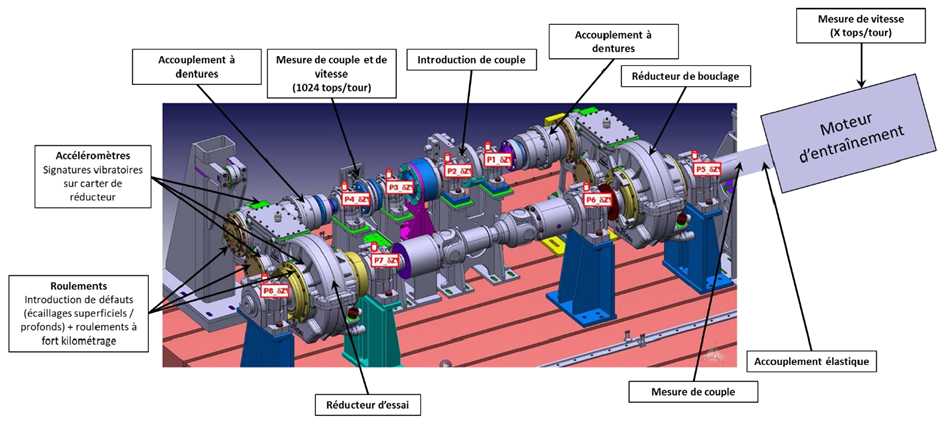
Bearings play a key role in mechanical transmissions, in that of undergoing heavy loads to isolate the rotating shaft from its support. Thus, the presence of defects on a ring or a rolling element must be watched carefully. In industrial sectors such as aeronautics and rail transportation, it is particularly important to detect a fault as early as possible, while the stopping time available for thoroughly inspecting the components of a vehicle’s speed reducer is limited. This justifies an interest in predictive maintenance, which consists in tracking the appearance of faults by the means of indicators measured on the transmission while it operates.
For condition monitoring to be effective, several parameters need to be determined, starting with the type of sensors to use. A common industrial approach is based on vibration signals gathered by an accelerometer on the transmission housing. LaMCoS (INSA Lyon) works on complementing this approach by studying the instantaneous angular speed (IAS) signal. This signal, measured directly on the transmission shaft by the means of an angular coder sensor, bears useful information from its direct link with the dynamics of the rotor.
In order to forecast the impact of a bearing fault on these signals, a numerical model of the transmission is developed since 2019 to simulate its dynamical behavior, and the way fault-related information propagates through it. Both measured and simulated signals are processed in the domain of angular frequencies, adapted to the study of speed variations in rotating machinery.
The aim of this thesis is first to enrich the numerical model to get the most out of both IAS and vibration signals combined, and second to validate it against tests on a full-scale transmission. Third, this knowledge will help one select the most reliable indicators for establishing a prognosis from the studied signals, as well as the appropriate sensor positions for this predictive maintenance.






